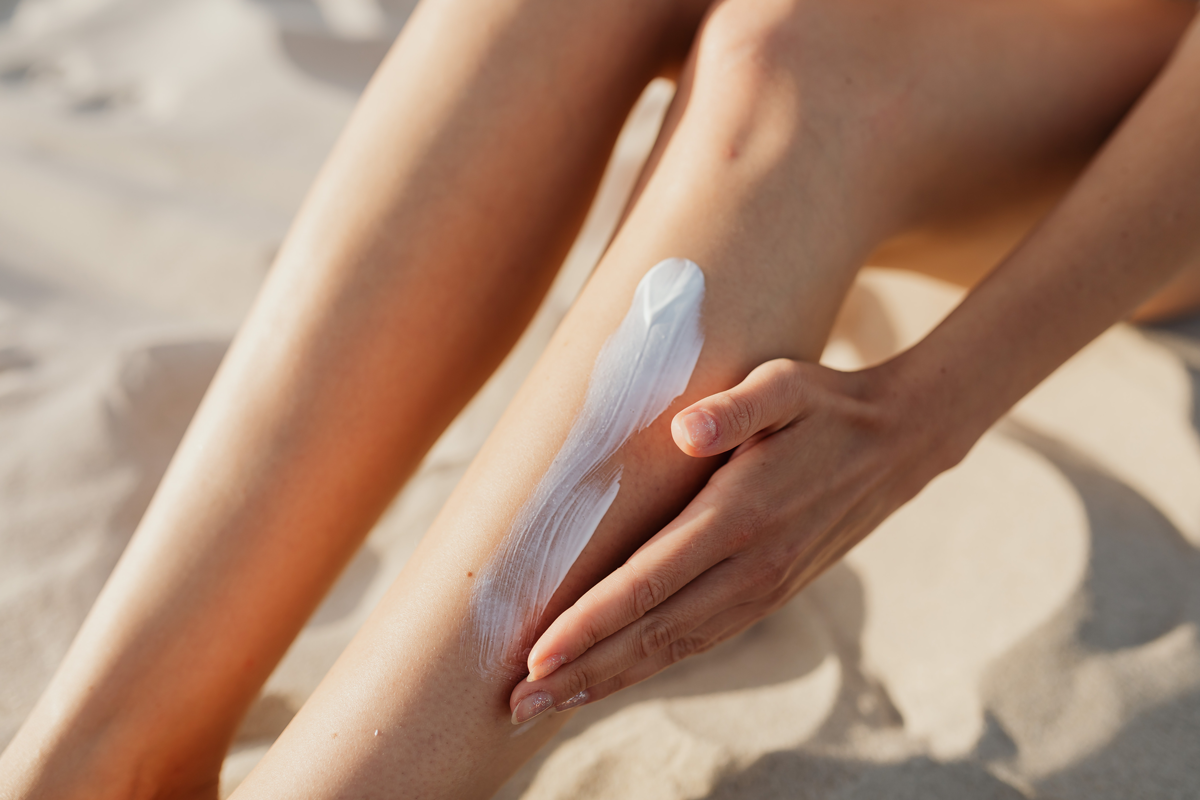Sunnier days come with sunbathing at the beach, going for an adventurous hike, and a lot of outdoor fun. While the sun can be very beneficial for our health, such as helping with vitamin D production and acting as a mood booster, too much sun exposure can cause harm to our skin.
You may have heard the importance of protecting your skin from the outside, which includes a good quality sunscreen. But have you ever thought about going above and beyond to protect your largest organ? Sun protection from the inside out can help cover all your bases when it comes to supporting your skin this summer. Let’s get into how the sun affects our skin, what sun protection beneath the surface entails, and why it can be beneficial.
The sun’s impact on our skin
The sun emits two different types of ultraviolet (UV) rays that can impact our skin. This includes UVA rays, which travel deep into the skin and cause premature aging, leathering and sagging of the skin. On the other hand, UVB rays can lead to sunburn due to their high energy content, which ultimately increases the risk of skin cancer.
Since UV rays interact with melanin, a pigment in the skin that changes depending on sunlight exposure, they can change the way our skin looks and feels. As a result, the skin damage mentioned above happens when melanin absorbs the UV rays. This can be a problem when our skin is exposed to the sun’s rays for long periods, allowing melanin more time to react with the sun.
What can you do to protect yourself from the sun?
From using topical solutions like sunscreen to supporting your skin from the inside out, there are a couple of different ways you can protect your skin from the sun’s harmful rays.
From the outside in
You may remember your parents preaching about the importance of wearing sunscreen while you’re having fun under the sun. They were right – a good quality sunscreen can go a long way when it comes to preventing sun damage.
When you’re out shopping for sunscreen, be sure to look for one that has a Sun Protection Factor (SPF) of at least 30 or more. SPF ratings only refer to UVB rays. When you find a sunscreen with SPF 30, it has the potential to block 97% of UVB rays. SPF 50 can block 98%, and SPF 100 stops 99% of UVB rays from reaching your skin.
You may be thinking, what about blocking UVA rays? Look for sunscreens that mention they are “broad-spectrum”. A broad-spectrum sunscreen ensures that you’re protected from both UVA and UVB rays.
From the inside out
While sunscreens are a great starting point in steering clear of sun damage, they don’t always last us the entire day. From being washed away in the water to rubbing off against clothing, it’s a good idea to take extra precautions to protect your skin from the sun.
This means turning to skin-friendly foods and dietary supplements that provide you with protection beneath the surface of your skin, ultimately allowing your skin to heal from within.
Consider increasing your intake of foods that are rich in the following nutrients:
- Vitamin C – Vitamin C plays a major role in collagen production, which helps to reduce wrinkles and protect against damage from UV rays. Foods high in vitamin C include citrus fruits like oranges and veggies like broccoli.
- Vitamin E – This vitamin is known to have anti-inflammatory properties to reduce UV-induced skin swelling and can absorb UV light to prevent skin damage. Sunflower seeds and almonds are rich in vitamin E.
- Omega-3 Fatty Acids – These healthy fats have anti-inflammatory effects that protect skin cells against sun-induced inflammation. Reach for foods like avocados and fatty fish like salmon or mackerel.
- Polyphenols – These are rich in antioxidants that act as a protective barrier for your skin against UV radiation. You can find them in
 blackberries and flaxseeds.
blackberries and flaxseeds.
If you’re looking to go the extra mile, opt for a skin-supporting formula like CanPrev’s UV Skin Protect, designed to protect your skin from sun damage, reduce wrinkle depth, and increase skin elasticity. This formula features NutroxSun, a blend of Spanish Mediterranean citrus and rosemary extracts clinically proven to protect the skin against daily sun exposure and UV radiation. Additionally, rosemary extract contains phenolic compounds and diterpenes which improve the skin’s response by 30% to UV-induced oxidation. Get ready to glow from the inside out!
Relaxing under the warmth of the sun can feel very rewarding. But without proper protection, it can be harmful to your skin. Make sure to have your largest organ’s back by wearing high quality sunscreen, eating a nutritious diet, and leaning on supplemental support when needed.
Sources:
Should you use very high SPF sunscreen?
Sun Safety
Sun and Skin – The Dark Side of Sun Exposure
Longwave and Shortwave Radiation
Vitamin E and Skin Health
Polyphenols: Skin Photoprotection and Inhibition of Photocarcinogenesis
Here’s Exactly What to Look for in a Sunscreen
The Benefits of Omega 3 for the Skin



